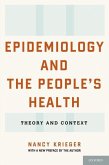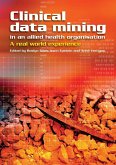This text deals with the design and accuracy of epidemiological studies. It aims to provide students with a clear understanding of the research strategies used in experimental studies so that they may ask the right questions, select the study population and follow-up period, obtain information on exposures, and follow up disease occurrences. Each step in the planning or critical evaluation of a study is illustrated by exercises based on actual cases. These exercises cover a wide range of exposures (including dietary factors, tobacco, alcohol, drugs and radiation and occupational hazards) and diseases.
Through a combination of descriptive text and exercises, this book presents an accessible framework for the planning and critical evaluation of epidemiologic studies. It describes the principal sources of error, their impact on the results, and the research strategies used to prevent errors. These strategies are the building blocks of epidemiologic study design which generally seek to obtain accurate results despite the employment of limited resources. The volume is illustrated with examples and exercises from studies published in international journals. It starts with an introduction of basic concepts, followed by a discussion of the basics of selecting the study population and follow-up period, asking the right questions, obtaining information on exposures, and analyzing disease occurrence. Separate treatment is given to strategies specific to case-control or experimental studies. Each step in the planning or critical evaluation of a study is illustrated by exercises covering a wide range of exposures--dietary factors, tobacco, alcohol, drugs, radiation and occupational hazards among others--and diseases such as cancer, cardiovascular disease, diabetes, and psychiatric disorders. The book concludes with an overall review of the different aspects of study design and a set of answers to the exercises. The text will equip students with a clear and thorough understanding of the design and accuracy of epidemiologic studies.
Through a combination of descriptive text and exercises, this book presents an accessible framework for the planning and critical evaluation of epidemiologic studies. It describes the principal sources of error, their impact on the results, and the research strategies used to prevent errors. These strategies are the building blocks of epidemiologic study design which generally seek to obtain accurate results despite the employment of limited resources. The volume is illustrated with examples and exercises from studies published in international journals. It starts with an introduction of basic concepts, followed by a discussion of the basics of selecting the study population and follow-up period, asking the right questions, obtaining information on exposures, and analyzing disease occurrence. Separate treatment is given to strategies specific to case-control or experimental studies. Each step in the planning or critical evaluation of a study is illustrated by exercises covering a wide range of exposures--dietary factors, tobacco, alcohol, drugs, radiation and occupational hazards among others--and diseases such as cancer, cardiovascular disease, diabetes, and psychiatric disorders. The book concludes with an overall review of the different aspects of study design and a set of answers to the exercises. The text will equip students with a clear and thorough understanding of the design and accuracy of epidemiologic studies.








